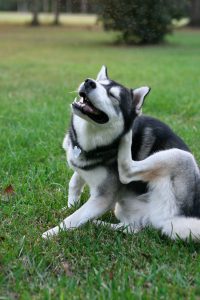 Fleas like temperatures below 95°F with humidity above 50%. It’s better to prevent fleas than to remove them. Fleas are brought in by the urban wildlife (rabbits, rats, squirrels, raccoons, etc.) that visit us and our bird feeders. As a general rule, birds do not have fleas but you are also feeding the critters that do have fleas. So, if you have a flea problem and feed the birds, stop feeding for a month or so to get the problem under control.
Fleas like temperatures below 95°F with humidity above 50%. It’s better to prevent fleas than to remove them. Fleas are brought in by the urban wildlife (rabbits, rats, squirrels, raccoons, etc.) that visit us and our bird feeders. As a general rule, birds do not have fleas but you are also feeding the critters that do have fleas. So, if you have a flea problem and feed the birds, stop feeding for a month or so to get the problem under control.
If you have fleas, you will have to treat the yard. If you have pets, treat them, the yard and the house within a 24 hour period. When fighting fleas, it is all about breaking the life cycle. There are a bunch of all-natural and synthetic products to choose from. Most products will take more than one application, 5 to 10 days apart to break that life cycle.
Our number one product for outdoor flea control is sulfur, but remember, it is a repellent not a killer. There are two types of sulfur, powder and granulated. Application rates vary but the following have worked well for me. Use 10# to 15# of granulated sulfur to cover a 1,000 square feet and should be reapplied every 10 to 14 days depending on weather. Five pounds of powdered sulfur will cover about 1,500 square feet and should be repeated weekly.
The all-natural product called Yardsafe from the folks at Cedarcide is a high concentration cedar oil product is in a ready to use quart that will cover about 2,000 square feet for the initial application. Repeat application in 5 to 10 days. This will kill the existing fleas and has a good residual for several days afterwards depending on weather.
There are also quite a few choices on the chemical side in both liquid and granulated. A good rule of thumb is to pick products with an active ingredient that ends with the suffix, “thrin”. Some of the most common are bifenthrin, cyfluthrin and permethrin. As always, please read and follow all label directions.





